Regular triathlons and Ironman triathlon races are challenging endurance events that test athletes’ physical abilities, mental toughness, and determination. Both involve swimming, biking, and running for designated distances of each sports activity, with a transition between each one. However, there are distinct differences between various triathlons.
What is a Triathlon?
A triathlon is a multi-sport event that consists of three continuous and sequential endurance races. The most common distance for beginner triathletes is the sprint distance, which typically includes a 750-meter swim, a 20-kilometer bike ride, and a 5-kilometer run. However, longer-distance triathlons have become very popular, with some becoming “bucket list” races. These include the Olympic distance triathlon (1.5-kilometer swim, 40-kilometer bike, 10-kilometer run). The Olympic distance triathlon is contested by elite men and women triathletes at the Olympics. Those races are “draft-legal” which means athletes can take advantage of “drafting” on each part of the race, most significantly on the bike.
The Olympic distance is also a popular race for citizen age-group triathletes and is usually not draft-legal.
Other popular distance triathlons include the half-Ironman, also known as 70.3, which consists of a 1.9-kilometer swim, 90-kilometer bike ride, and 21.1-kilometer run. Off-road triathlons, such as XTERRA races, have become popular, too. They are typically contested on trails and dirt roads in challenging, hilly terrain.
Triathlons are popular for athletes of all levels, from beginners to seasoned competitors. They offer a great way to challenge yourself, improve your fitness, and push your limits in a supportive and encouraging environment. Many triathletes find that the variety of disciplines keeps training interesting and helps prevent boredom and burnout.
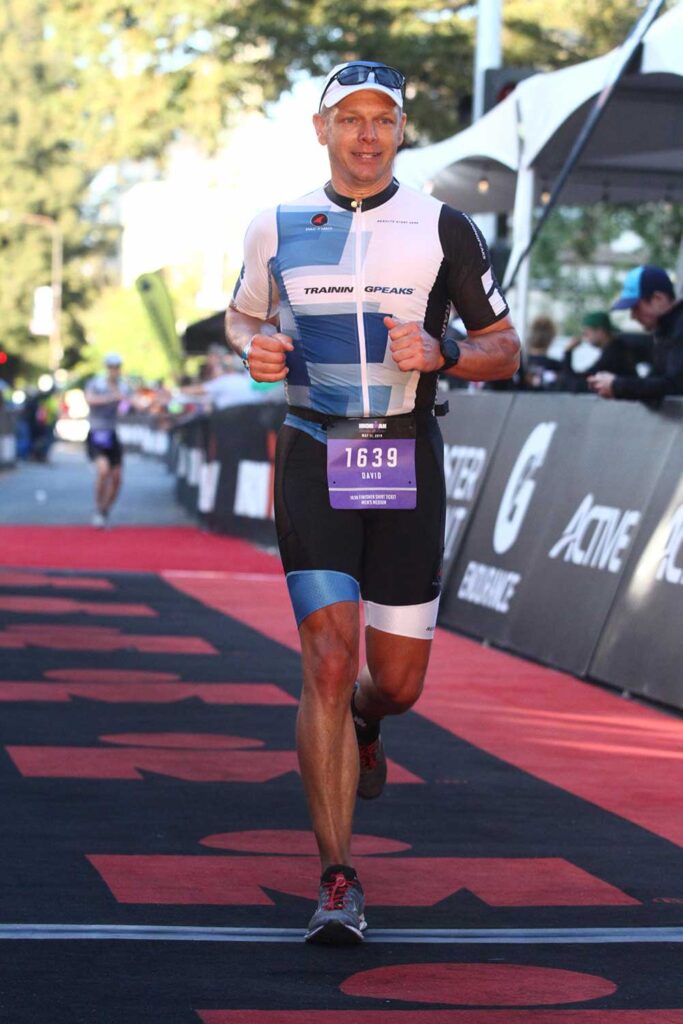
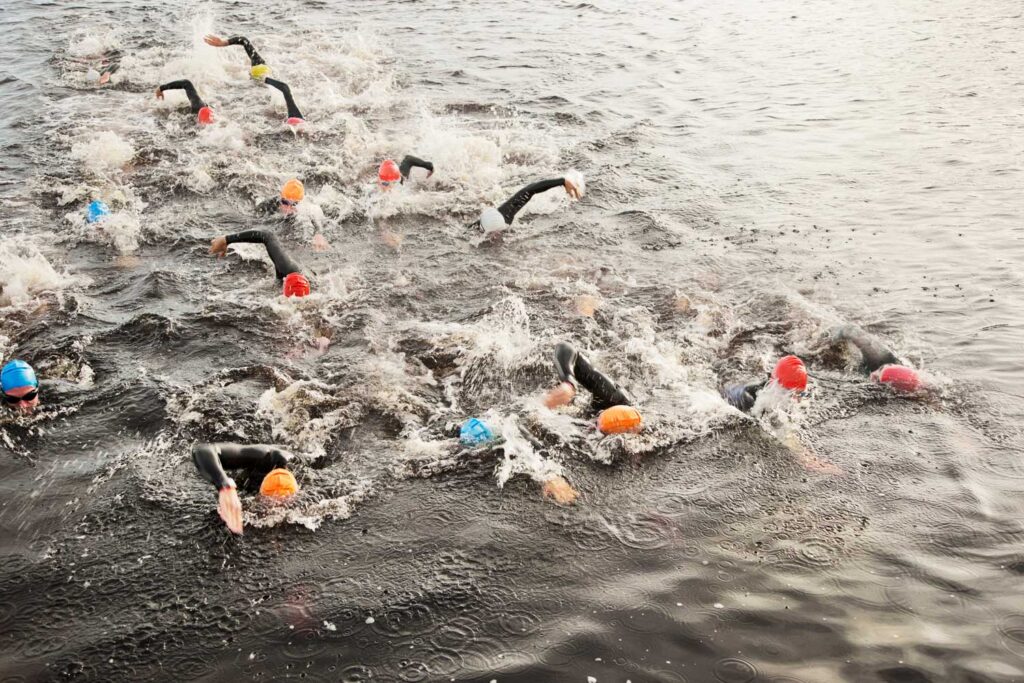
What is an Ironman?
An Ironman triathlon race is known for its grueling distances and challenging conditions. A true Ironman distance consists of a 3.86-kilometer swim, a 180.25-kilometer bike ride, and a full marathon run of 42.2 kilometers. Completing an Ironman race is a significant accomplishment that requires months of dedicated training, mental fortitude, and impeccable organization.
The Ironman brand is synonymous with endurance and athleticism, attracting elite athletes worldwide to compete in its prestigious events. Ironman races are held worldwide in iconic locations such as Kona, Hawaii, and attract thousands of spectators who come to witness the incredible feats of human endurance on display.
Differences Between a Triathlon & an Ironman
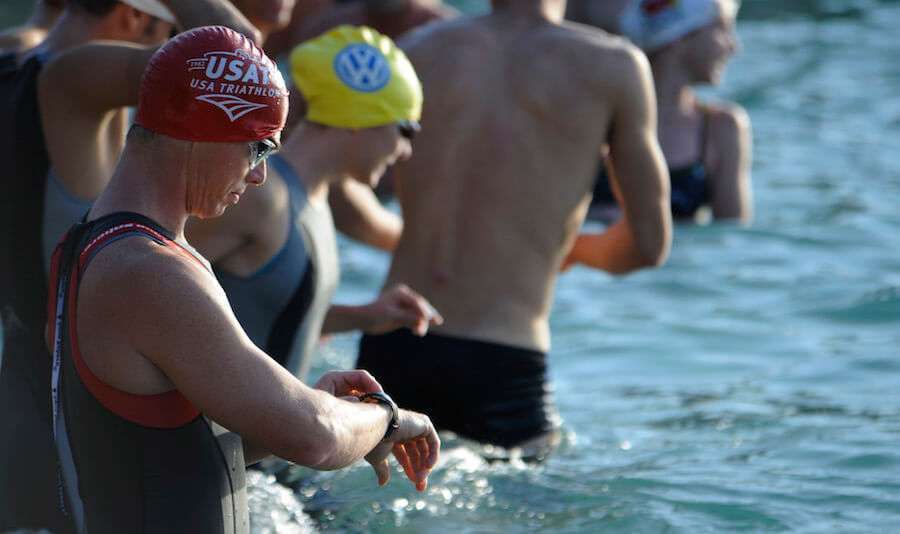
- Distance: The most obvious difference between a triathlon and an Ironman is the distance of the race. While a standard triathlon may range from sprint to Olympic distance, an Ironman race is significantly longer. The Ironman distance is a true test of endurance and requires months of intense training to prepare for the physical and mental demands of the race.
- Time: Another key difference between a triathlon and an Ironman is the time it takes to complete the race. While the average sprint triathlon may take less than an hour or two to finish, an Ironman race can take anywhere from 8 to 17 hours, depending on the athlete’s fitness level and experience. Completing an Ironman is a full-day commitment that requires careful pacing, proper hydration and fueling, and mental toughness to push through the physical and emotional challenges of the race.
- Preparation: Training for a triathlon and an Ironman requires different levels of preparation and commitment. Preparing for a shorter-distance triathlon may involve only a few hours of weekly training. But an Ironman preparation typically requires a dedicated training plan that includes long hours of swimming, biking, and running, as well as strength training, flexibility work, and mental preparation. It’s also useful to gradually build up to your chosen race distance and practice transitions from swimming to biking and biking to running so those are familiar to you on race days.
Swimming, in particular, can be very challenging for triathletes regarding technique and fitness.
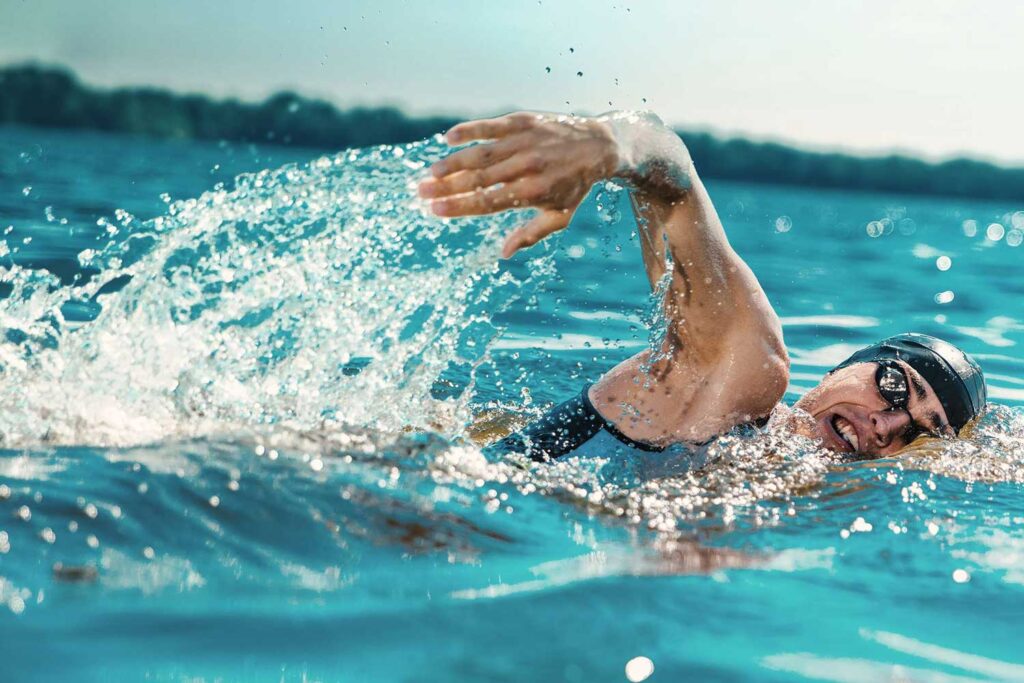
Depending on skills and experience levels, getting some coaching for technique and workouts is a great idea. Adequate training for swimming is often difficult due to availability and access to pools and open water, crowded pools, or scheduling. Many time-constrained triathletes often benefit from doing a good bit of their swim training at home or at the gym using a swim training machine such as a Vasa SwimErg or Vasa Trainer.
It’s a time-effective method that will help athletes, from beginners to Olympic swimmers and Pro triathletes, get stronger, more efficient, and more confident swimmers on race day.
Most triathlons’ swimming events are held in open water, such as the ocean, lakes, or rivers. Open-water swimming can be intimidating for those who don’t have experience with it. To prepare mentally and physically, download and read this free eBook: Four Keys to Fearless Open Water Swimming.
Ironman athletes often spend months or years preparing for the race. Those following a sensible plan gradually increase their training volume and intensity over weeks and months to build the endurance and fitness required to complete the event.
- Experience: Participating in a shorter-distance triathlon and an Ironman event are very different experiences. While a sprint or Olympic-distance triathlon may be a fun and challenging event for athletes of all levels, an Ironman is a significant achievement that few athletes attempt. Ironman races are known for their challenging courses, unpredictable weather conditions, and intense competition, making them a true test of an athlete’s skill, resilience, and determination. Crossing the finish line of an Ironman triathlon is a life-changing moment that can inspire and motivate athletes to achieve their goals and push their limits in new and exciting ways.
How Long Is the Swim Distance in an Ironman?
The swim portion of an Ironman race covers 3.86 kilometers (2.4 miles). For many participants, this is one of the most challenging segments. Swimming long distances requires physical stamina and efficient freestyle swimming technique, which requires less energy expenditure. The Ironman triathlon swim is typically conducted in open water, such as the ocean, lake, or river, which adds layers of complexity due to unpredictable conditions like waves, currents, and water temperature.
To avoid disqualification, competitors must complete the swim in under 2 hours and 20 minutes. Given the intensity of the Ironman, triathletes often need months of dedicated swim training to meet the demands of this endurance event.
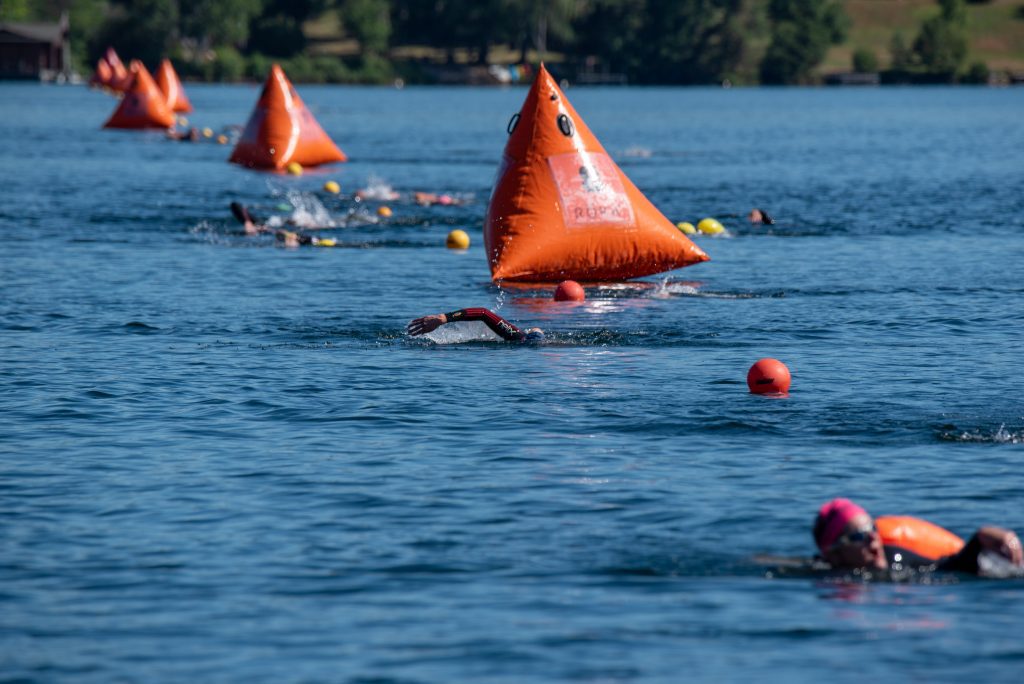
How to Improve Your Speed for the Ironman Swim Distance
Improving your speed for the Ironman swim distance involves a combination of building endurance, improving your freestyle swimming technique, mental preparation for confidence, and refining your overall strategy. Here are some essential tips to boost your performance in the water:
- Increase Your Endurance: Building up your fitness to swim long distances successfully takes time and patience. Incorporate a mix of steady-state sustained swimming and higher-intensity interval training into your swim routine to help increase endurance while building speed. Start with shorter sets and gradually extend the distance. Most importantly, be consistent in your swim training in the pool or using an indoor swim ergometer at home or the gym.
- Focus on Technique: Maintaining a strong, long, and taut bodyline in freestyle is critical to conserving energy during long swims. Work on optimizing your stroke efficiency, body position, and breathing pattern. Tools like swim trainers can help you break down each part of your stroke and refine your form.
- Use Resistance Training: Integrate resistance training into your swim practice to enhance your power and stamina in the water. Vasa’s swim trainers are designed to target the muscles used in swimming, helping you build strength and speed. By simulating the swim stroke, indoor swim trainers allow you to practice out of the water and improve your swimming performance faster.
- Practice Open Water Swimming: Open water presents challenges different from those experienced swimming in a pool. Practice swimming in a venue similar to your races, such as lakes, oceans, or rivers. This will help you to adapt to varying conditions and build confidence.
- Monitor Your Progress: Track your swim times during training to identify areas for improvement. Setting small goals can help you stay motivated and steadily increase your speed.
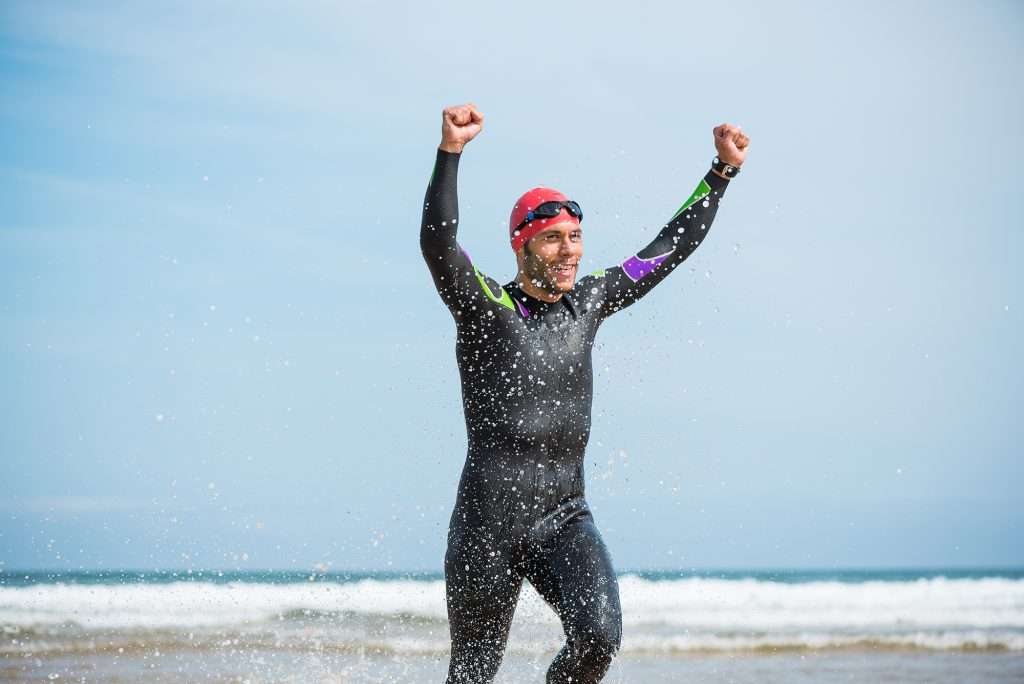
Train Smarter with Vasa
If you want to improve your swimming and overall performance in any distance triathlon, including Ironman races, consider adding Vasa indoor swim trainers to your training routine. Vasa offers a range of high-quality swim ergometers and dryland trainers to help you build the strength, endurance, and technique you’ll need for your triathlon swims. Our products are designed to provide a lifetime of reliable, functional service, empowering athletes to get stronger, better, and faster in sports, fitness, and injury rehab. Discover how our products can help you achieve your athletic goals and reach new heights of success in your training and racing endeavors. Quality costs less, so invest in your future with Vasa today.